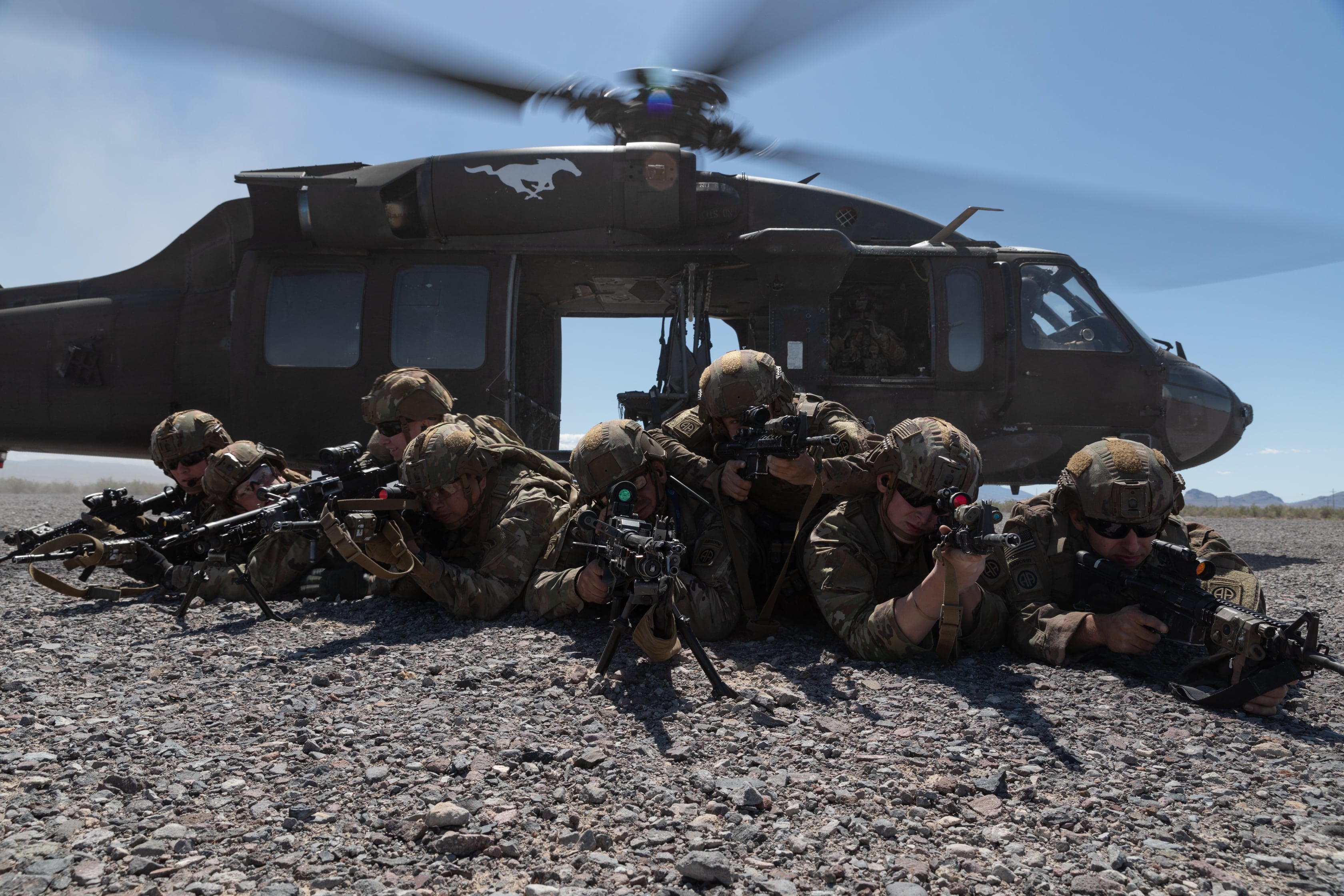It’s a data-driven world out there.
More and more companies across America are turning to human resources analytics to identify and manage their internal talent.
And soon, the Army’s platform to collect, analyze, and harness that data for the uniformed workforce will come online.
Ahead of AUSA, Army Times spoke with the service’s senior leaders responsible for developing and implementing personnel policies and talent management — Army Secretary Christine Wormuth, Chief of Staff Gen. James McConville, G-1 Lt. Gen. Gary Brito and Sgt. Maj. of the Army Michael Grinston.
“As we look ahead, we’re well past that period where 9/11 was kind of a big recruiting push,” explained Wormuth. “We have to think anew about how we bring people into the Army, and certainly part of that is making sure that we’re giving them the opportunities they want.”
The all-volunteer force is entering a new era after the Afghanistan withdrawal. Most young people joining the Army today are looking for a career and benefits.
Enter the Army’s expanded “War for Talent,” as McConville likes to put it. It’s an integral part of the Army’s “people first” approach, he told Army Times.
Under McConville’s watch, the service has transformed how it identifies and selects leaders for key leadership roles. But the Army wants to create a comprehensive culture of talent development and management that will span soldiers’ entire careers rather than just cropping up at key moments.
What’s in place and expanding
In recent years, the Army has developed and implemented new processes for screening and selecting leaders for key positions, McConville and Brito told Army Times.
“It’s really about getting the right leaders in the right place at the right time,” McConville said.
The service’s key initiatives for achieving that goal — command assessment programs — are maturing and expanding, McConville said. The multi-day events, described by some as resembling the NFL scouting combine, include a fitness test, psychological evaluations, blind interviews and evaluations from former colleagues and subordinates.
The Battalion Command Assessment Program, which evaluates lieutenant colonels and promotable majors, will start its third iteration in fiscal 2022.
The Colonels Command Assessment Program, which evaluates colonels and promotable lieutenant colonels, is continuing into its second year.
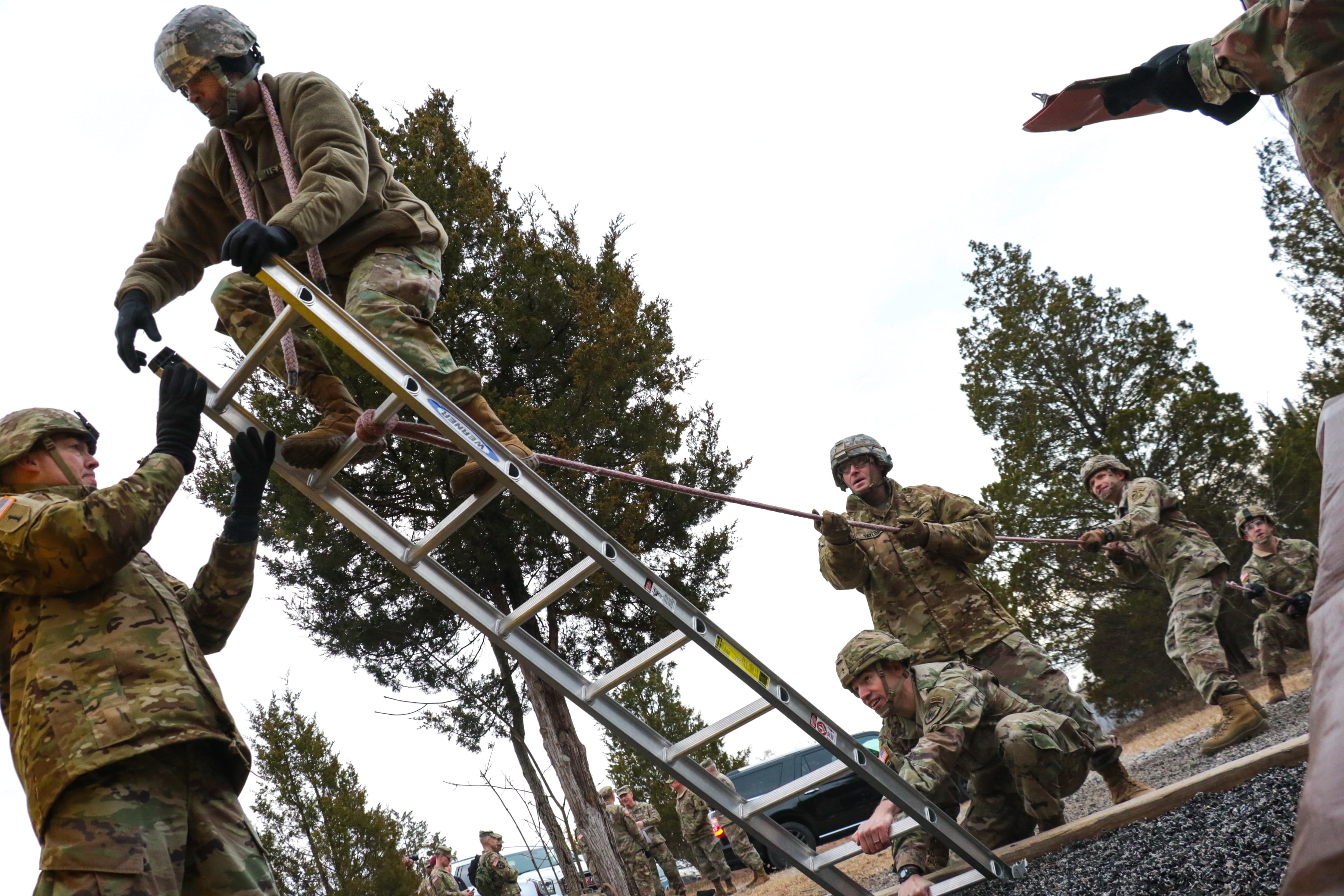
These centralized programs are expanding to include selection of command sergeants major for brigade-level organizations. A pilot assessment program for battalion-level CSMs will continue in the fall, as well.
“We did the pilot last year, and this year is focused on [evaluating and selecting] the nominative sergeants major which are selected to go into certain brigade-level positions,” Brito told Army Times.
The service is still crunching the numbers to determine whether commanders selected through these programs are performing better, according to McConville.
“We don’t have a sufficient amount of data to show the results of commanders in command,” he said. “But what we do have is data that shows that those we found not ready for command, we believe, would’ve had some challenges.”
And those who weren’t ready for command, McConville noted, were given feedback on how they can improve themselves and come back in the future.
There have been cases where officers who had weaknesses were coached “to address those weaknesses, and then come through the process and do much better,” McConville added.
The Army is also currently piloting a semi-centralized version of the assessment program for selecting first sergeants at each installation.
The First Sergeant Talent Alignment Assessment is designed to be administered at the division or installation-level rather than in one place for the entire Army, which is how other selection programs operate.
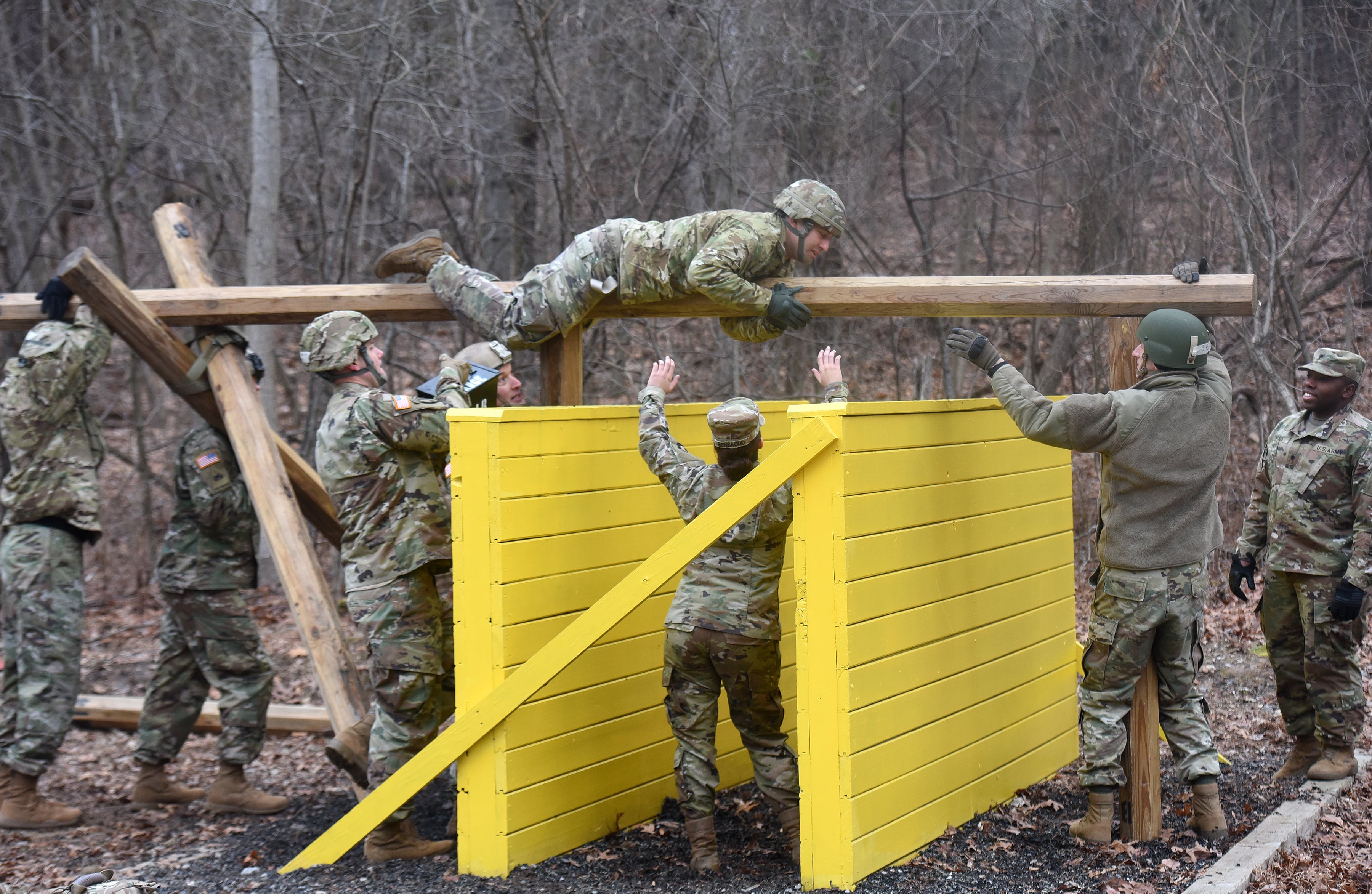
In practice, the first sergeant assessment is similar to the command and CSM assessment programs. Pilot versions have included a fitness test, behavioral interview and blind panels. The pilot program is set to expand in fiscal 2022, with potential implementation across the force in fiscal 2023, according to Army officials.
The Army has also worked in recent years to implement marketplace-style assignment processes for officers and NCOs who are earlier in their careers.
The service’s Talent Alignment Process for officers allows soldiers to browse unit vacancies and directly connect with those units.
The first full marketplace cycle, which covered summer 2020 assignments, saw approximately two-thirds of officers and units alike receive one of their top-three preferences.
A similar program for NCOs completed its first iteration for staff sergeants through master sergeants earlier this year. While it did not have the same level of participation as the officer assignment marketplace, Army officials are confident it will deliver better assignment satisfaction for mid-career NCOs.
What’s soon to come
The Army is also confident that the launch of the Integrated Pay and Personnel System-Army will play a central role in revolutionizing the talent management process for the entire force.
IPPS-A, which is currently scheduled to go live for the Regular Army and Army Reserve in September 2022, will subsume an archipelago of legacy human resources and pay systems.
Senior leaders have hailed the new platform as transformative.
“I see [IPPS-A] as a very positive, beyond 21st-century web-based system that allows us to take a very wide and deep portfolio of systems that managed all the HR aspects and put it into one,” said Brito, the G-1.
McConville emphasized that IPPS-A will help keep all three components of the Army on the same page.
“We’re continuing to emplace [IPPS-A]; it’s in the National Guard right now,” McConville said. “And over the next 12 to 18 months, [we want] to get that completely fielded in the Regular Army and Reserves so we have all of our components on one system.”
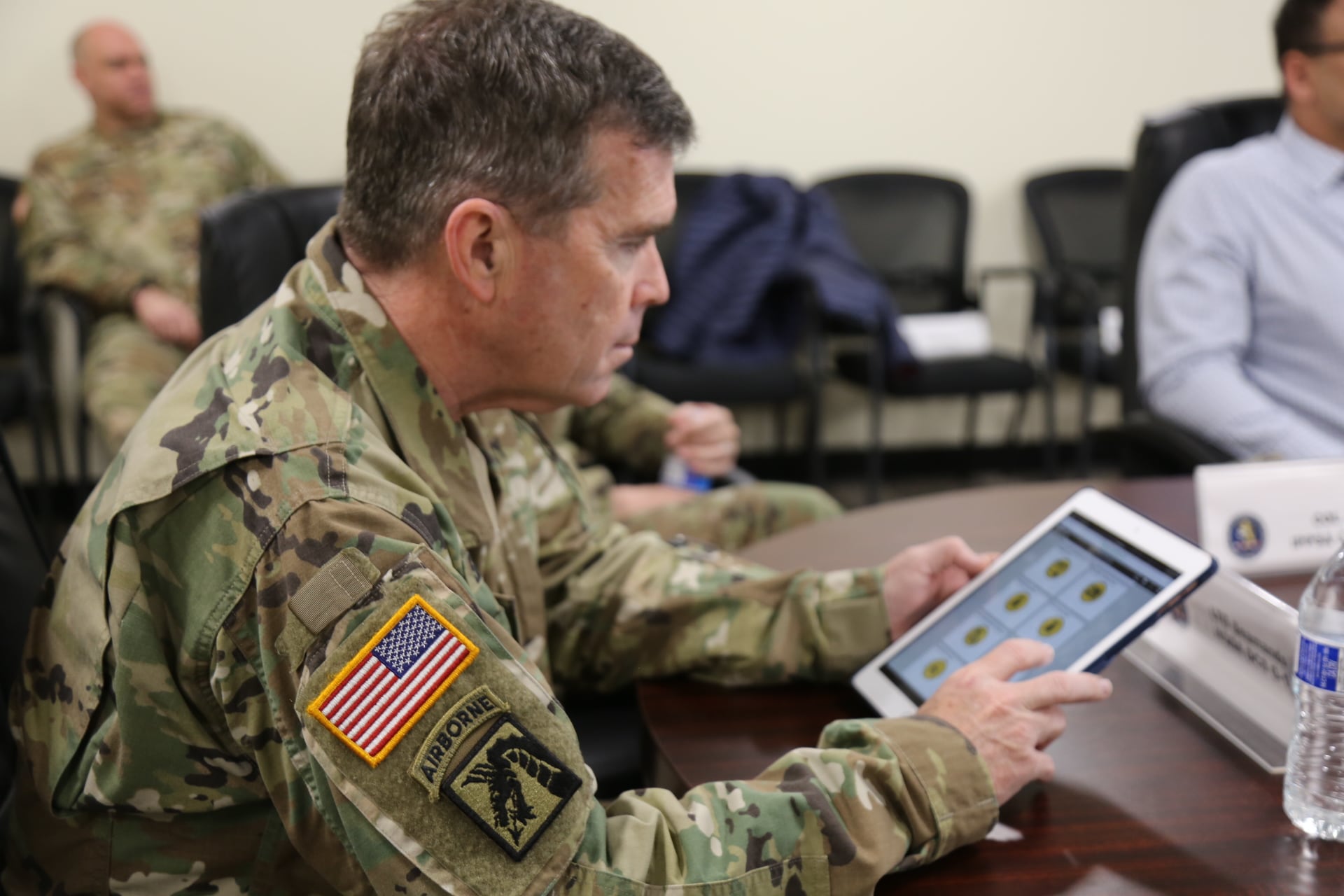
One of the key selling points of IPPS-A — beyond eliminating outdated systems — deals with integrating aspects of the Army’s talent management plan.
“The intent is that we move from an industrial age personnel management system where we manage soldiers by two variables — their rank and their MOS — and we go into a much more comprehensive [talent] management system where we take advantage of their knowledge, skills, behaviors and even preferences that they have,” McConville said.
Once fully implemented, IPPS-A will collect and manage the data that drives individual soldier talent profiles, Brito explained, in addition to hosting the officer and enlisted talent marketplaces. The new platform, if properly harnessed, will provide a massive injection of data to facilitate talent management and the assignment process.
“It gives you that capability to streamline and see the [talent] data on our field and this massive Army we have, and [it also helps to] transparently provide the human resource management and lifecycles that our soldiers and our Army deserves,” Brito said.
Upcoming IPPS-A releases will also create a condensed display for each soldier’s individual talent profile that is similar to existing record briefs, but with one key difference: civilian-acquired skills and work experience are listed on the front page. Those fields aren’t even on traditional record briefs.
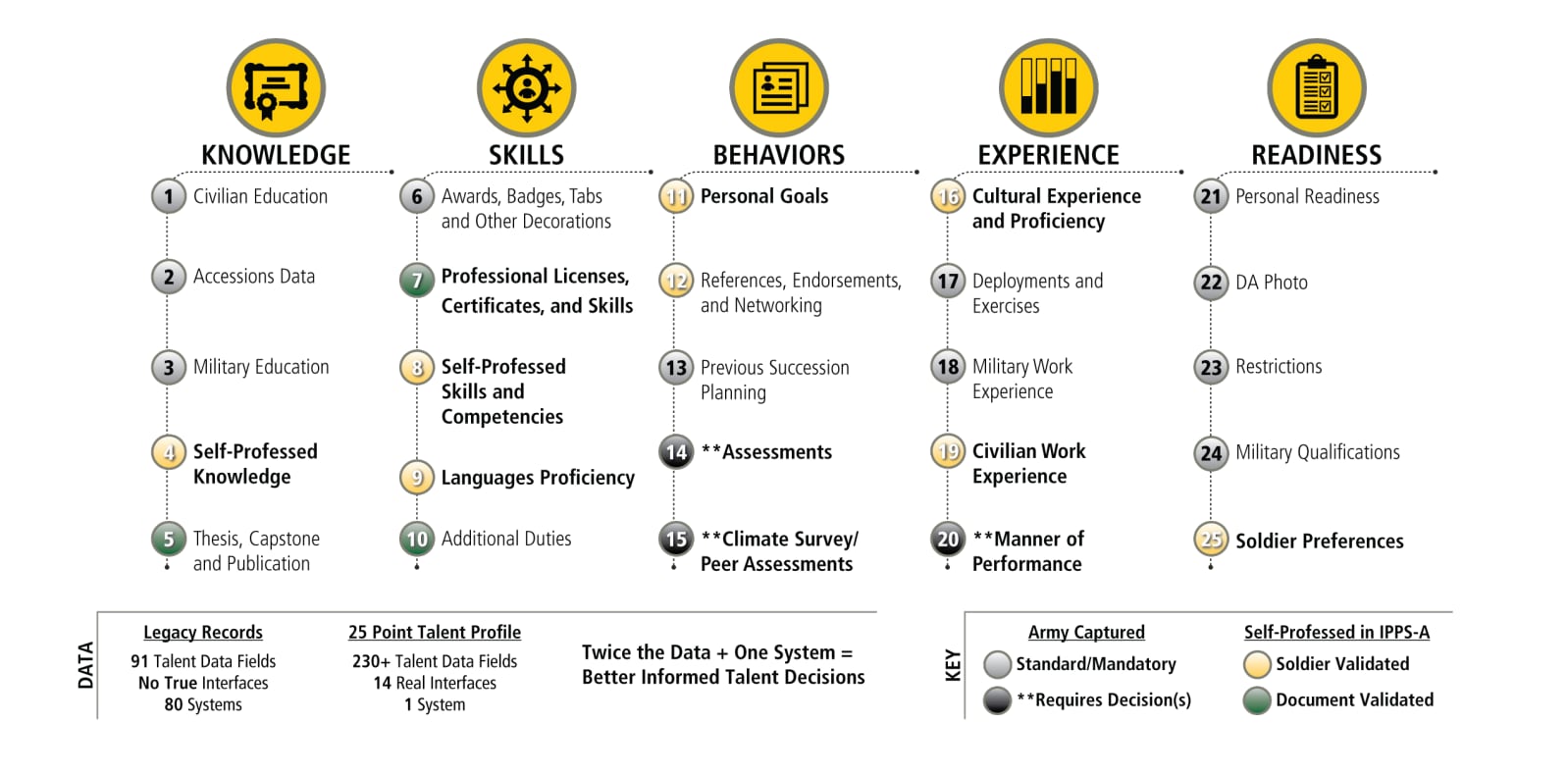
The switch will effectively raise the importance of civilian experience, and even soldiers’ hobbies.
“Future releases will aim…to enable us to see [that] civilian expertise, the language skills they may have developed as a hobby, or some other attributes that might not be resident to your specific [job], regardless of the component you’re in,” Brito said.
McConville pointed to a handful of active-duty soldiers with completely unrelated jobs who just successfully completed a coding tryout for the Army’s new Software Factory.
“We put out a call for those who would be interested, and three of the people who signed up — one was a medic, another was an automotive mechanic, and another was a baker,” McConville said. “That’s what their MOS was, and then we find out they’re actually world-class coders, and [now] they’re going to be coding for the Army.”
Brito reflected on a similar experience he had with a reserve soldier during a 2005 deployment to Iraq.
“While deployed several years back in Iraq as a battalion commander, we had a reservist that was supporting our operations who was an expert in road repair and development,” Brito said. “[Civilian expertise] is a level of data that you would just not ever see [then]. And I would not have learned [this without] talking to him.”
“So fast-forward to now, and then 2022 and beyond,” Brito added. “[With IPPS-A,] we’ll see that type of thing. ... It really just allows us to retain, see, attract and keep that level of talent we need.”
Lots of data
The service is also launching Project Athena, which Brito described as “the nexus” of talent management.
Athena is currently rolling out at various career milestone levels of professional military education, like the captain’s career courses and Command and General Staff College. It offers a framework for leaders to “identify those attributes that they’ll need [to improve] for command — it’s about leader development,” McConville said.
Project Athena is an outgrowth of some of the early feedback that the Army received from its command assessment programs, McConville explained.
“Many of the officers that went through [command assessment programs] said, ‘I wish I knew that these were my weaknesses and strengths,’” the chief of staff said.
Project Athena may just be the beginning of the long-term changes to early career professional education sparked by the data gathered from the centralized assessment programs, according to Brito.
“Part of what this assessment program may also show us — and this is part of the data-rich feedback — is if we see what could be a trend and a gap in leader development [across the force], why not address it early?” Brito said.
Army senior leaders also see these data sets and talent management programs as a way to alleviate many of the so-called “corrosive behaviors” across the force, like racism, extremism, sexual assault and harassment, suicide and others.
Brito hopes that selecting better leaders for key positions will improve quality of life for soldiers under their command.
“What I expect to see is leaders that connect better or more effectively to their soldiers, leaders that not tolerate any harmful behaviors, [and] leaders that promote a positive command climate,” Brito explained. “[I expect leaders] that will put a firewall…[against] these harmful behaviors — sexual assault, sexual harassment, racism, extremism, you name it.”
Davis Winkie covers the Army for Military Times. He studied history at Vanderbilt and UNC-Chapel Hill, and served five years in the Army Guard. His investigations earned the Society of Professional Journalists' 2023 Sunshine Award and consecutive Military Reporters and Editors honors, among others. Davis was also a 2022 Livingston Awards finalist.
